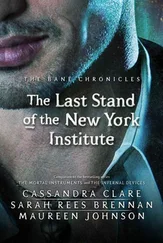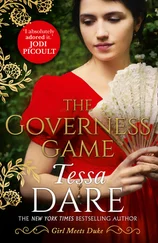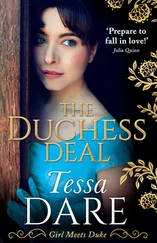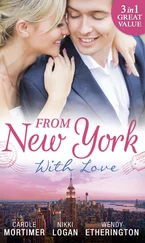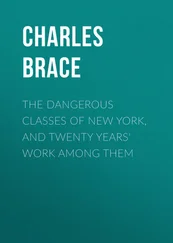That last year my already considerable consumption of bourbon increased, causing blackouts a couple of times, when I didn’t know how I’d gotten back home or where I’d been, and those scared me enough to stop drinking for a few days and try to cut down, but no one else I knew was cutting down, and continual drinking seemed to be part of what it took to live in New York.
This was not just an individual excuse but a recognized phenomenon of New York in that era. Norman Podhoretz wrote, in Breaking Ranks , “Of course everyone, including me in those days, drank too much; for literary people it went with the territory. A writer was expected to drink and suspected if he didn’t; and far from being frowned on, drinking heavily was admired as a sign of manliness, and of that refusal of respectability that seemed necessary to creative work.”
A writer friend of mine came back from lunch with his editor to celebrate a new book contract and complained bitterly that the editor had so many martinis so fast that the writer had to pour him into a cab to go home. My friend pointed out that it was the writer who was supposed to get drunk at lunch, and the editor’s job to see that he got home. He felt cheated.
When Joan Didion spoke of feeling she’d had a low-grade hangover for eight years when she left New York, she was speaking for all of us. I justified the hard drinking as part of the life I chose to lead (an occupational hazard, like black lung for coal miners), but it was increasingly turning sour, creating scenes of conflict and pain rather than the early exhilaration that came from toasting the dawn with bourbon on Village rooftops.
One night in my last year in New York I went to dinner with Baldwin at his friend Mary Painter’s apartment, and the bourbon Jimmy and I sloshed down fueled a terrible misunderstanding and argument. Mary was a gentle, quiet women who was like a big sister to Jimmy (he dedicated Another Country to her, and she was the friend he had in mind when he met with Muslim leader Elijah Muhammad and felt he had to defend his friendships with whites). Jimmy invited us to a fashion show in Harlem the following week being staged by his sixteen-year-old sister. He told of his fears for her because she was talented and ambitious and a Negro, and felt she was in pain now because of all that.
A Frenchwoman who was visiting Mary tried to console Baldwin by saying that all sixteen-year-old girls are in pain, and I jumped in to add, thinking of myself, that all sixteen-year-old boys suffer too, no matter what their color. Baldwin’s enormous eyes grew wide as he turned on me and said in accusation, “ You don’t understand .” Mary wisely kept silent, but I kept pressing my point—that each person’s private pain was as great as any other’s, since each of us could only suffer to the limit of our own capacity. All this got more tangled the more we drank, and Jimmy receded into silent fury.
I remember thunder and lightning and summer rain, and the evening ended in a painful haze. I don’t remember getting home but only recall waking with a hangover, made more severe by the pounding memory of breaking the trust of a friendship I treasured. (We later picked up the pieces, but it never was whole again.) I couldn’t help thinking with irony the next morning that the pain of my hangover could not have been greater no matter what my race.
The city that once was bright with promise seemed to be growing dark with anxiety and trouble as I used more bourbon to numb the pain. Different, dire images of New York began to accumulate, adhere to my consciousness, words that defined the place in this bleak new mood. I salted some away as prospective epigraphs for the novel I would write, my favorite being the opening line of Stephen Crane’s short story “The Open Boat,” which seemed to sum up not only the plight of those people bent over oars while rowing for their lives in a stormy sea, but also our striving to survive and even struggle upward in the densest concrete jungle of them all: “None of them knew the color of the sky.”
Before Norman Podhoretz wrote his much-maligned autobiographical book Making It , speaking aloud of “the dirty little secret” of success in literary New York, Seymour Krim wrote an essay about the even dirtier secret of not making it. In “Ubiquitous Mailer vs. Monolithic Me” he confessed his frustration and sense of failure at being what someone known as the Celebrity Checker called a “semi-name,” and spoke of the emotional wringer of “living your 40s inside the heightened Manhattan crucible.” I’m sure that is what Ted the Horse had in mind when he asked me, “Are you going to talk about ‘the New York crucible’?”
Part of that ordeal is getting your first bad review in the Times , as I did with my second book, Revolt in the South , a collection of my pieces on civil rights stories in The Nation , stitched together for a Grove Press paperback original. It was blasted by a reporter, a transplanted southerner, who took the occasion to bash me and the book and northern liberals in general, especially those who go below the Mason-Dixon line to write about civil rights. James Baldwin and Bayard Rustin wrote eloquent letters to the Times in my defense, and Ralph McGill gave the book a fine notice in The Saturday Review , but nothing seemed to stick but the blot in the Times , which in literary matters is truly the newspaper of record. It hurt. I learned then how public are writers’ defeats, how unlike the lawyer who loses a case or the doctor who loses a patient, for nobody outside the office or medical center knows, while the writer’s defeat is read about by neighbors, bartenders, friends, enemies—everyone who reads the paper over morning coffee, which in New York is everyone who reads, and that is everyone .
I didn’t feel jealous of writers my age whose work I liked getting published and acknowledged; I just wanted to do my own . I felt Rabbit, Run by John Updike was the first real novel that spoke for people my age, and when my old sportswriter friend from the Indianapolis Star , Bob Collins, came to New York, I dragged him into a bookstore and made him buy it. The stories in Goodbye, Columbus caught the tone and feel of people of my generation, and I met Roth when it was published by Houghton Mifflin, the same house that did my own Island in the City the same season, as well as a marvelous book of short stories called The Poison Tree by Walter demons, another of our generation.
Whatever frustration I felt about not yet doing my novel when I lived in New York was erased seven years after I left, when Gay Talese invited me for drinks to celebrate the publication of Going All the Way when it was named as a book club selection and hit Time ’s best-seller list (it eventually sold more than a million copies in all editions). Talese poured us both big gin and tonics, turned his x-ray eyes on me with full force, and said, “Congratulations. You’ve really done it.” And I knew he meant it and was genuinely pleased.
In the meantime, back in the midst of my bourbon-brown mood of that last year in New York, I plunged for salvation into my work, and though the novel I still plugged away at came chokingly slow, if at all, I managed to write magazine pieces of which I was proud. The most monumentally researched and meaningful to me was an Esquire article called “Dos, Which Side Are You On?” which followed John Dos Passos’s path from 1920s rebel to 1960s conservative, written in the style of U.S.A . In preparation I read every book he had written—it was well over thirty volumes by then—and was moved again by the mass and power of U.S.A ., and freshly taken with his early mastery, in Manhattan Transfer , of a new, kaleidoscopic form that captured the hardest place of all to pin down in its shifting modes and moods.
Читать дальше

